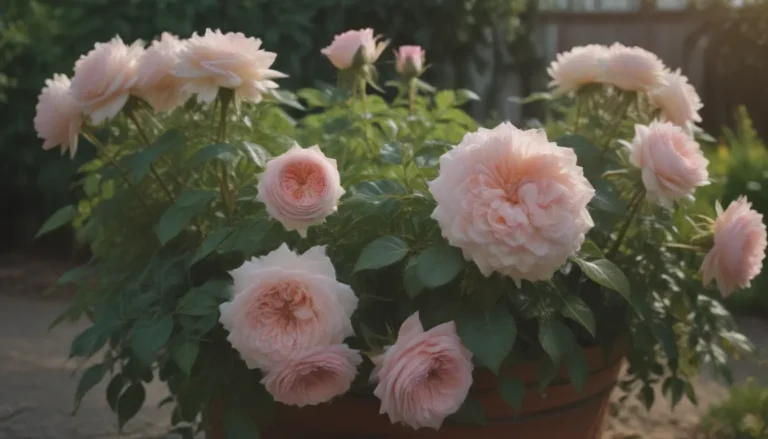All You Need to Know About Growing and Caring for Marigolds

Marigolds are a beloved staple in many gardens due to their cheerful blooms and ease of care. If you’re looking to add some vibrant color to your garden, marigolds are the perfect choice. In this comprehensive guide, we’ll cover everything you need to know about growing and caring for these beautiful flowers.
The Beauty of Marigolds
Marigolds, scientifically known as Tagetes spp., are true annuals that complete their life cycle in a single growing season. These flowers come in a variety of sizes and colors, from the tiny single-petal flowers of signet marigolds to the large, double-petal blossoms of African marigolds. One thing they all have in common is their characteristic daisy-like appearance that is sure to brighten up any garden.
Planting Marigolds
Marigolds can be planted from nursery starts or seeds in the spring, once the soil can be worked. These fast-growing plants will reach blooming maturity within a few months when planted from seeds. For earlier blooms, start seeds indoors six to eight weeks before the last frost.
Marigold Care Tips
Once established, marigolds are low-maintenance and pest-free. Here are some essential care tips to keep your marigolds thriving:
-
Light: Plant your marigolds in full sun for the healthiest plants and maximum flower production.
-
Soil: Marigolds are not picky about soil, but they prefer neutral pH levels and well-draining soil.
-
Water: Provide regular water, especially when first planting. Once established, marigolds are drought-tolerant but benefit from weekly watering.
-
Temperature and Humidity: Marigolds thrive in heat and are suitable for zones 2 to 11. They can tolerate a range of humidity levels but may develop powdery mildew in damp conditions.
-
Fertilizer: Marigolds generally do not require additional fertilizer, but regular deadheading will keep them blooming.
Types of Marigold
There are several species and divisions of marigold, each with its unique characteristics:
-
African Marigolds (Tagetes erecta): Known for their large, showy blooms.
-
French Marigolds (Tagetes patula): Compact plants with smaller flowers.
-
Signet Marigolds (Tagetes tenuifolia): Delicate, fine-textured foliage.
Pruning and Propagating Marigolds
Pruning and propagating marigolds can help promote bushier growth and prolong flowering:
-
Pruning: Pinch back early flower buds to encourage bushier growth. Deadhead spent blooms to promote continued flowering.
-
Propagating: Marigolds are easily grown from seeds, but stem cuttings can also be rooted successfully.
Growing Marigolds from Seed
Marigolds are a popular choice for starting seeds, making them a fun project for gardeners of all ages:
-
Indoor Start: Begin seeds indoors 6 to 8 weeks before the last frost for early blooms.
-
Direct Sowing: Marigold seeds can also be sown directly into the garden soil.
Common Pests and Diseases
While marigolds are relatively pest and disease-free, some issues may arise:
-
Pests: Keep an eye out for snails, slugs, and aphids.
-
Diseases: Watch for powdery mildew, especially in humid conditions.
Troubleshooting Common Marigold Problems
Here are some solutions to common issues gardeners may face when growing marigolds:
-
Seedling Problems: Prevent damping-off disease by using sterile planting materials and good airflow.
-
Stem Flopping: Prevent tall marigolds from toppling over by burying them deeper or staking them.
-
Midsummer Weakness: Pruning back leggy growth can encourage new blooms in midsummer.
Fun Facts About Marigolds
-
Marigolds were brought to Europe from Mexico in the 16th century.
-
They are popular for repelling nematodes and deterring deer and rabbits.
-
Signet marigolds are edible and add a spicy kick to salads.
Conclusion
Marigolds are a versatile, beautiful addition to any garden. With their bright colors and easy care requirements, they are perfect for beginner and experienced gardeners alike. By following these tips and tricks, you can enjoy a summer filled with vibrant marigold blooms that will brighten up your outdoor space. So, grab some seeds, roll up your sleeves, and get ready to grow your own stunning marigold garden!





